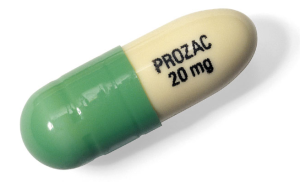A study published today in the journal JAMA Internal Medicine, found that the risk for deliberate self harm doubles when depressed young people start an antidepressant treatment regime with higher-than-usual doses.
 The study saw Harvard University researchers look at health records of 162,625 privately insured people between the ages of 10 and 64, who were treated for depression with three well-known antidepressants – Celexa, Prozac and Zoloft.
The study saw Harvard University researchers look at health records of 162,625 privately insured people between the ages of 10 and 64, who were treated for depression with three well-known antidepressants – Celexa, Prozac and Zoloft.
The researchers compared similar patients using criteria such as the intensity of their depression symptoms and previous reporting of self harm, who received either typical or higher starting doses of the antidepressants.
The results showed that after one year of treatment, children, teens and young adults were twice as likely to engage in deliberate self harm if they started at higher doses of the antidepressants.
Our colleagues at the UK Science Media Centre gathered reaction from experts:
Expert reaction to antidepressants and self-harm as published in JAMA Internal Medicine*
Prof David Nutt, Professor David Nutt, speaking on behalf of the European College for Neuropsychopharmacology, said:
“We need to be clear that this is about starting antidepressant therapy at a high dose – the work shows that normal doses are not a significant problem. Nevertheless, this will help doctors optimise the doses in younger people, and clinicians should take note.”
Dr Irene Petersen, Reader in Epidemiology, Department of Primary Care and Population Health, UCL, said:
“The study by Miller and colleagues sought to examine the association between high dose antidepressant and self-harm in young people using US health care utilization data. It is a thoughtful and well conducted study. As the authors highlight, one of the strength of using such data is the possibility to obtain a large sample of people that may otherwise be difficult to recruit by other means. It is, however, important to recognise that in contrast torandomised controlled trials health care utilization data reflect real life clinical practice.
“In clinical practice allocation to treatment is not based on chance, but a clinical decision process. It is the family doctors’ and/or psychiatrists’ job to take a clinical decision on whether to initiate individuals on high or standard dose drug treatment. They may take these decisions based on clinical guidelines, medical training and prior experience. It seems unlikely that a psychiatrist or family doctor would make a decision to prescribe a high dose antidepressant had they not been concerned about the patient. Young people prescribed high dose antidepressants are likely to be different from those who were prescribed standard (modal) dose. Perhaps they suffer from more severe and acute psychiatric problems? Unfortunately, doctors may not document their clinical judgement in great details in the electronic records. This may have some severe consequences when we seek to make inference on effects of drug treatment from such records based on clinical management data. In other words, if we cannot disentangle the effect of the treatment from the severity of the psychiatric problems studies may be confounded by the indication.
“In recent years propensity score methods have become increasingly popular in medical research and are now used in many observational studies. It is a way to balance the characteristics of individuals receiving different treatments. This is also the method that is used by Miller and colleagues. However, propensity score methods are no magic bullet. In contrast to randomised controlled trials, we cannot be certain that the propensity score method will account for both measured and unmeasured characteristics – like the acute presentation of psychiatric illness. Miller and colleagues have probably done what was possible with the data at hand. However, lingering uncertainties remain. We cannot be sure that the observed increase in self-harm is solely due to high dose antidepressants. An alternative, but equally valid, interpretation is that high dose antidepressant is a mere marker of young people with acute severe psychiatric problems and thus it is the underlying condition not the treatment that is associated with increased risks of self-harm.
“In any circumstances, the study by Miller and colleagues highlight the need for close clinical monitoring of young people with severe and potential acute psychiatric problems.”
* ‘Antidepressant Dose, Age, and the Risk of Deliberate Self-harm‘ by Miller et al. will be published in JAMA Internal Medicine at 21:00 UK time on Monday 28th April, which is also when the embargo will lift.
Declared interests
Prof David Nutt – I have received speaker’s honoraria and research funds from many companies that have interests in antidepressants
Dr Irene Petersen – I received funds from Novo Nordisk, but no funds from companies that produce antidepressants